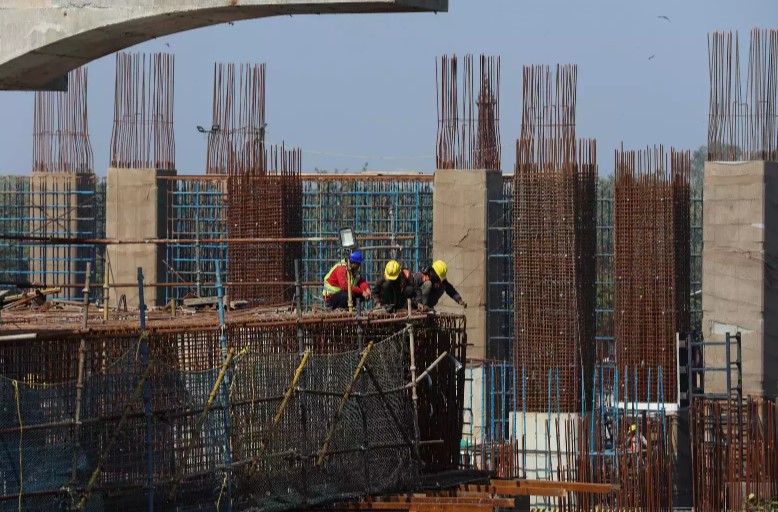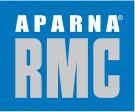Better Futures: Ready-Mix Concrete (RMC) in India’s Construction Landscape

May 6, 2024
The very foundation of India’s booming construction industry is undergoing a significant transformation, with Ready-Mix Concrete (RMC) emerging as a game-changer. Unlike conventional site-mixed concrete, RMC offers a pre-mixed solution produced in centralized plants before being delivered directly to construction sites. This innovative approach is witnessing a meteoric rise in popularity, as evidenced by the impressive Compound Annual Growth Rate (CAGR) of 6.15% for the RMC market in India from 2021 to 2026. The widespread adoption of RMC isn’t merely driven by its novelty; it’s a testament to the numerous advantages it offers.
Key Drivers for RMC Adoption
Several key factors are propelling the rise of Ready Mix Concrete in India:
- High Preference for RMC: Contractors are increasingly opting for Ready Mix Concrete in India due to its clear advantages over site-mixed concrete. These advantages include:
- Consistent Quality: RMC production in centralized plants ensures consistent quality control, leading to stronger and more durable concrete structures for buildings and infrastructure projects across India.
- Efficiency and Speed: Ready Mix Concrete in India eliminates the need for on-site mixing setups, significantly reducing project timelines and streamlining construction processes.
- Reduced Wastage: Precise measurement and mixing at the plant minimize material wastage, leading to cost savings and a more sustainable construction approach.
- Environmental Benefits: Centralized Ready Mix Concrete in India production helps control dust and noise pollution at construction sites, contributing to a cleaner work environment.
- Growth in Construction Market: The Indian construction industry is experiencing a significant boom, fueled by government initiatives in infrastructure development and urbanization. This surge in construction activities translates to a higher demand for high-quality concrete, making Ready Mix Concrete in India a preferred choice.
- Growing Popularity of Geopolymer Cement Concrete: A new trend in the Ready Mix Concrete in India market is the rising adoption of geopolymer cement concrete. This eco-friendly alternative offers superior properties like high strength, acid resistance, and a lower carbon footprint compared to traditional Portland cement concrete. As environmental consciousness grows, geopolymer concrete is expected to play an increasingly important role in Ready Mix Concrete in India.
With these drivers propelling the market forward, Ready Mix Concrete in India is poised for further growth and is expected to become an even more prominent player in shaping the future of the construction landscape.
How Ready Mix Concrete in India Promotes Sustainable Development
While challenges exist, Ready Mix Concrete in India offers several advantages that contribute to sustainable development practices:
- Reduced Material Wastage: Compared to traditional site-mixed concrete, Ready Mix Concrete in India production utilizes precise measurement and mixing techniques, minimizing material wastage and promoting resource efficiency.
- Use of Sustainable Materials: Ready Mix Concrete in India facilities have the ability to incorporate industrial by-products like fly ash and slag into the concrete mix. These by-products not only enhance the durability of the concrete but also reduce the overall consumption of virgin materials like cement, leading to a more sustainable construction process.
- Lower Air and Noise Pollution: Centralized Ready Mix Concrete in India production allows for better control of dust and noise emissions compared to on-site concrete mixing. This translates to a cleaner work environment and minimizes the environmental impact of construction projects.
The Future of Ready Mix Concrete in India: A Promising Outlook
Ready Mix Concrete in India holds immense potential for significant growth. Currently, the consumption of Ready Mix Concrete in India sits at around 20% of the total cement produced, a stark contrast to developed countries where the market share reaches 70-80%. This vast difference indicates a significant opportunity for Ready Mix Concrete in India to expand its footprint in the coming years.
Meanwhile, government initiatives focused on infrastructure development, urbanization, and real estate growth are expected to drive the demand for high-quality construction materials like Ready Mix Concrete in India. This, coupled with increasing environmental consciousness, is likely to propel the adoption of sustainable practices like using geopolymer concrete within the Ready Mix Concrete in India market. As a result, the market size of Ready Mix Concrete in India is projected to reach a staggering US$ 7.7 billion by FY2030.
Furthermore, The possibilities for RMC in India extend far beyond the current applications. Here are two potential innovations that will shape the future of construction.
3D Printing Technology: The construction industry is on the cusp of a paradigm shift with 3D printing. RMC, with its precise consistency and workability, is perfectly suited for this futuristic building technique. Think of efficient on-site printing of complex structures, reduced construction waste, and the ability to create intricate architectural designs. RMC could be the essential ink in this transformative process.
Recycled Content Advancements: Sustainability is paramount, and RMC is already contributing by incorporating recycled materials. The future holds even greater promise. Research is ongoing to develop mixes that utilize higher percentages of recycled aggregates like crushed demolition waste. This will not only minimize environmental impact by diverting materials from landfills, but also reduce reliance on virgin resources. Imagine creating sustainable structures from what was once considered waste – that’s the potential of advancements in recycled content.
By actively pursuing these innovations, India’s RMC industry can position itself as a global leader in sustainable and efficient construction practices. The benefits will be far-reaching: a safer workforce, a reduced environmental footprint, and the ability to construct high-quality, future-proof infrastructure. With continued investment in R&D and collaboration across the construction ecosystem, India can build a better tomorrow, literally brick by innovative brick.
